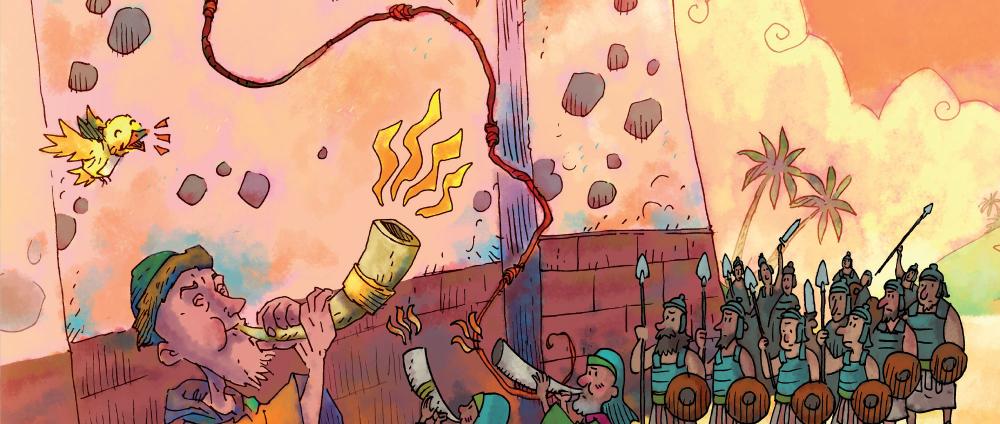
Crossing the Jordan
- Delight in the unusual way God led the Israelites across the Jordan River.
- Remember, as God’s people did, that our powerful God is able to do anything and is at work in our lives.
- Tell someone else about God’s love and greatness.
Leader Reflection
God's people have been wandering in the wilderness for forty years, and God is now ready to lead them into the promised land. One thing is clear from the story: this is not the accomplishment of Joshua or the Israelite people, but the work of God alone.
God tells Joshua, "Today I will begin to exalt you in the eyes of all Israel, so they may know I am with you as I was with Moses" (3:7). This signals an important aspect of the passage. God is now completing the work he began by delivering the Israelites from Egypt. He will demonstrate this by leading his people into the promised land in much the same way he delivered them from Egypt.
First comes the ark of the covenant, the tabernacle object that symbolizes God's holy presence among his people. But the ark is never something like a talisman the people themselves can use to accomplish something. It's a sign of God's presence, and God controls its movements. God even tells his people to keep their distance from it.
By God's instructions, the Levites—carrying the ark on long poles—stand beside the Jordan. This river is normally not all that great an obstacle and could be forded. But the text notes that the river is now at flood stage, impossible to cross on foot. But as the Levites with the ark step in, a "blockage" occurs upstream, and the river dries up where they are about to cross. The Levites take their stand in the middle of the riverbed, and the people begin to cross. So, just as the Israelites passed through the Red Sea on dry ground, they now complete their journey by crossing the flooded Jordan on dry ground.
It is often the case that God directs his people to do something physical to commemorate a great act of deliverance. With the exodus there was the Passover, and now God directs the Israelites to erect twelve great stones gathered from the dry riverbed, each representing one of the twelve tribes of Israel. Just as the children were to ask at Passover, "What does this mean?" so these twelve stones would serve as a constant reminder to generations after of what the Lord had done.
The stone memorial is also a reminder to us that there are "milestones" in our journey of faith—baptism, the Lord's Supper, Profession of Faith or Confirmation, marriage, and others—sacraments and sacramental actions that serve to remind and assure us of God's saving love and power.
God says his people are to tell future generations: "He did this so that all the peoples of the earth might know that the hand of the Lord is powerful" (4:24). In other words, God's deliverance of Israel isn't just about them, but a part of his much larger plan to show the world his love and power, ultimately in Jesus Christ, the Savior of the world.
Steps
Step 1 Breathe
Use this time to focus your attention on God.
Do this with me: calm your head, heart, and hands as you slowly breathe in . . . and out. (Demonstrate a few deep "in and out breaths" with eyes closed.)

Get Unlimited Access!
Sign up for DWELL Digital to unlock all online leader resources, printable pages and session plans.
Call 800-333-8300 or Request Access
Already a subscriber? Log In
Learn About DWELL
DWELL helps kids find their place in God's Big Story. Learn more about this popular and trusted children’s ministry curriculum.
